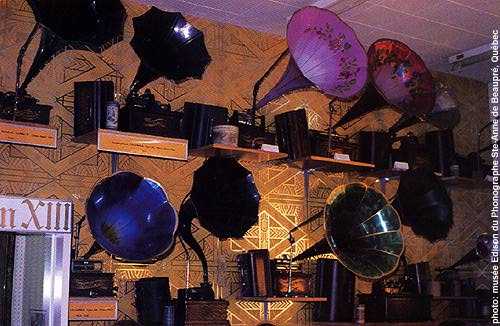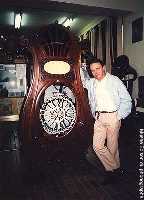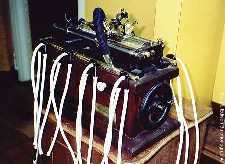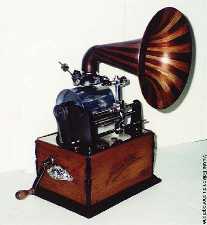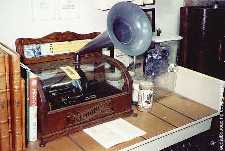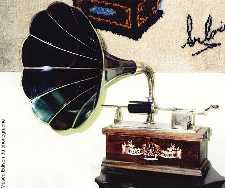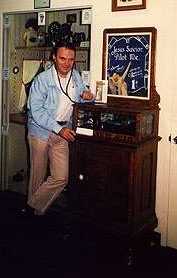|
I bought my first cylinder phonograph in 1970 at an antique dealer in Quebec City, for $135.00.
It was two years after my arrival in North America, and I bought it because of a friend who told me
where it was and insisted for me to go and see it. It was an EDISON Standard Model D, with an H reproducer and no horn , but with "only" 17 Edison 4 Minute Blue Amberol celluloid cylinders.
Only is important because it is when I tried to find more cylinders that my life tilt up to sink into the ins and outs of the acute collecting. The next cylinders I was put forward were, of course, 2 minute wax ones with, above all, a COLUMBIA Graphophone Type BK. Thinking having solved the question, I bought it, being sure to have in my hands a sample of each type of cylinder machines ever put on the market.
|
To see enlarged pictures, click on the phonographs
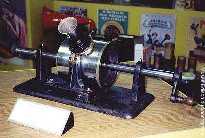
Tinfoil Phonograph which belonged, if my information is right, to Emile Berliner, the co-inventor, with Charles Cros, of the lateral reproduction of sounds. The mandrel is 5"½ (14 cm) of diameter and 6" (15 cm) long. Circa 1880.
|
